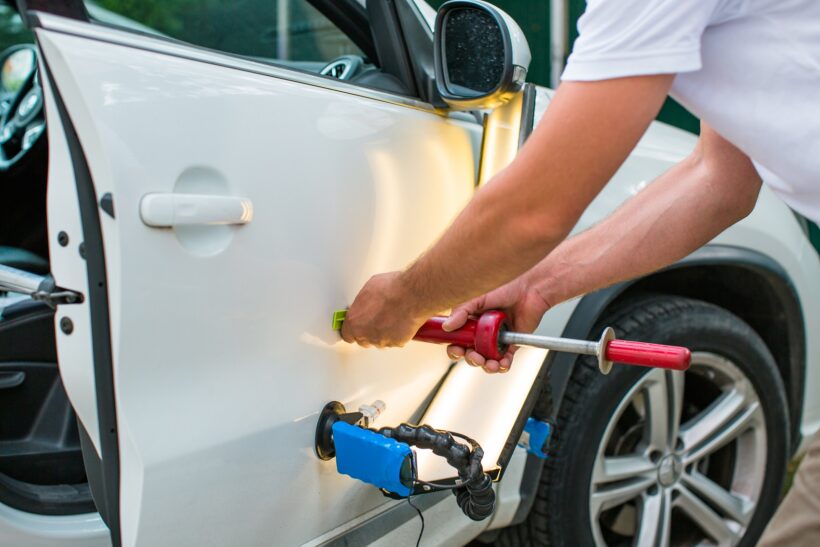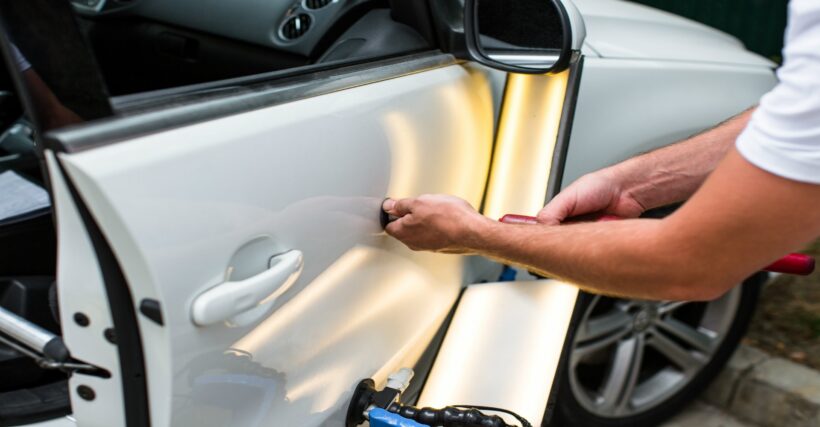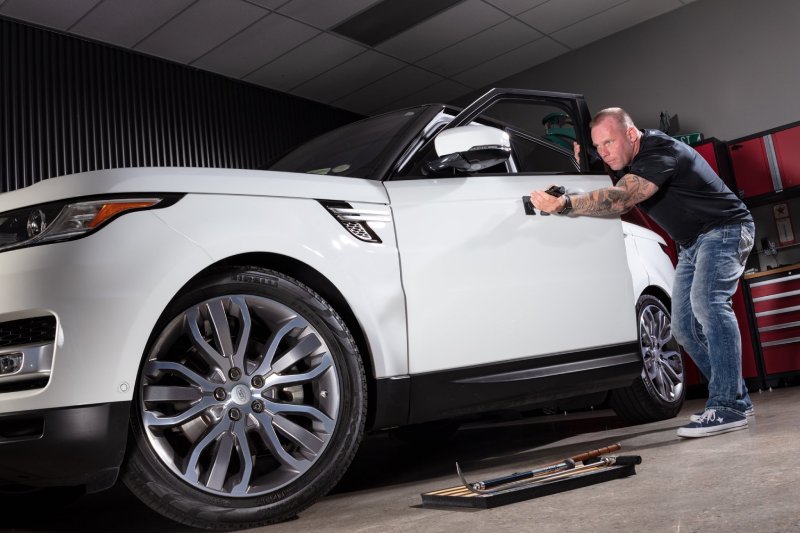It’s a common scenario many car owners have experienced: walking back to your parked car, you spot an unsightly dent marring its once-perfect exterior. This unexpected dent may be small, but the traditional solution—an often-costly visit to an auto body shop—might seem dismaying. However, a less intrusive and more cost-effective solution is known as paintless dent repair (PDR).
PDR primarily removes minor creases, door dings, hail damage, and even larger vehicle dents. This technique, which preserves the car’s original paint, has revolutionized the auto repair industry, offering a practical alternative to traditional dent repair procedures. Now let’s delve into how this process works.
How Paintless Dent Repair Works

Paintless dent repair involves meticulous steps honed over the years by industry experts, such as Precision Dent. This method requires specific skills and tools to return a vehicle to its original state effectively.
The dent undergoes thorough scrutiny, with factors like its size, depth, and location under consideration. The extent of damage informs the techniques and tools needed for the repair, ensuring that the process is tailor-made for each dent. Here are steps explaining how the process works.
1. Pre-Inspection And Preparation Stage
A critical evaluation of the dent characterizes the beginning stages of PDR. During this initial assessment, a detailed plan of action is formulated. By considering factors such as the dent’s size, depth, and location, technicians can determine the most effective strategies for the upcoming repair.
Following the assessment, preparation for the repair process commences. This involves ensuring the affected area is clean and accessible. However, certain vehicle parts may need to be temporarily removed to reach the backside of the dent.
This is done meticulously, with every care taken to ensure no further damage is inflicted on the vehicle. Though often overlooked, the preparation stage is pivotal in ensuring the success of the repair process.
2. The Repair Stage
The repair stage is where the magic truly happens. Here, the dent is massaged back into place using specialized tools designed specifically for this purpose. The process mainly involves two techniques: pushing and pulling.
The first technique, pushing, involves applying force from the inside of the dent, gradually smoothing it until it matches the car’s original surface. This process requires skill and precision to ensure the original paint isn’t damaged.
For dents located in areas where the backside isn’t easily accessible, the pulling method is employed. In this case, technicians use tools to pull the dent outward. Regardless of the technique used, the objective remains to restore the car’s surface to its original form without affecting the paint job.
3. Post-Repair Process

A thorough inspection follows the repair stage to ensure the complete removal of the dent. This is a vital step in maintaining the high standards associated with PDR.
The final finishing touches are applied once the technicians are satisfied with the repair. This may involve polishing the area or reassembling removed parts. The result is a vehicle that looks as good as new, with no signs of previous damage.
5 Benefits Of Paintless Dent Repair

When the paintless dent repair is done correctly, it comes with many benefits, such as the following:
1. Cost-Effectiveness
Among the most compelling benefits of PDR is its cost-effectiveness. This technique eliminates several steps involved in conventional dent repair processes, such as filling, sanding, and painting. The streamlined nature of PDR significantly reduces labor costs, leading to lower charges for the car owner.
Furthermore, since PDR doesn’t require additional materials like paint or body fillers, these savings are also passed onto the customer. This economic advantage makes PDR popular for those seeking quality repair without breaking the bank.
2. Time Efficiency
Another notable advantage of PDR is its time efficiency. Traditional dent repair methods can be quite time-consuming, with vehicles often remaining in the shop for several days. PDR, on the other hand, is a quicker alternative.
Depending on the severity and location of the dent, a PDR job can often be completed within a few hours. This rapid turnaround time is particularly beneficial for individuals and businesses that rely on their vehicles daily, minimizing disruption and inconvenience.
3. Eco-Friendliness
In an era where environmental conservation is paramount, PDR scores highly as an eco-friendly option. Unlike traditional methods, it doesn’t involve harmful chemicals often found in paints and fillers. PDR generates little to no waste, as there are no replaced parts or discarded materials.
By choosing PDR, you’re not only opting for a high-quality repair method but also making a conscious choice to reduce your environmental impact. It’s a win-win situation that more and more vehicle owners are beginning to appreciate.
4. Preserving Original Paint And Vehicle Value

One of the significant advantages of PDR is its ability to preserve the vehicle’s original paint. A car’s original paint is an integral aspect of its aesthetic appeal and market value. PDR techniques ensure this paint is not disturbed, thus retaining the vehicle’s original look.
By preserving the original paint job, PDR also helps maintain the car’s resale value. Potential buyers often prefer vehicles with their original paint, as it gives assurance of a well-maintained vehicle. So PDR isn’t just about repairing a dent; it’s about preserving your investment.
5. Versatility
Last but certainly not least is the versatility of PDR. This versatile technique can address dents, from minor dings to larger depressions. PDR can provide a solution, whether it’s damage from a rogue shopping cart, an errant car door, or a hailstorm.
The ability of PDR to deal with various types of dents without affecting the vehicle’s original paint has made it an increasingly popular choice in the automotive repair industry. Its versatility makes it invaluable in any auto body repair professional’s toolkit.
Conclusion

PDR offers a practical, cost-efficient, and environmentally friendly solution for removing vehicle dents. The entire process—which includes pre-inspection, repair, and post-repair stages—is designed to preserve the vehicle’s original paint and value.
PDR’s versatility allows it to tackle a variety of dents, making it a preferred choice in the auto repair industry. Its quick turnaround time and reduced costs are significant advantages over traditional repair methods.

